10 Avoidable Email Marketing Follies
Digital marketing has opened the door for a lot of brand messaging strategies. Even with the rise and rise of popular channels like social media, instant messaging, and now, conversational commerce for communication, email marketing remains one of the most effective ways for businesses to reach new and existing customers.
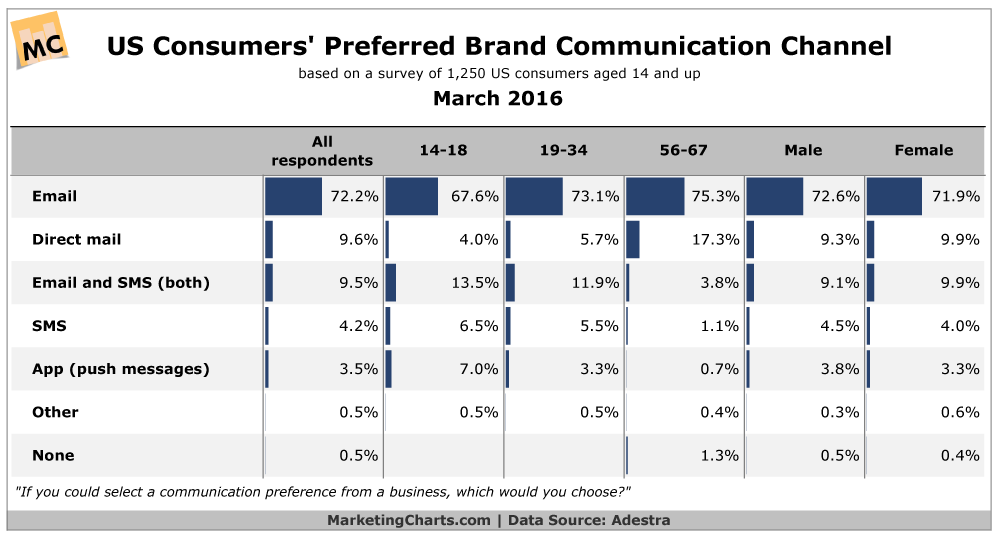
However, it only takes one quick swipe to land your email into the trash folder. Brands continue to make a lot of simple mistakes that can kill your entire campaign. Let’s discuss some of the most avoidable mishaps you can keep in mind when crafting your next company email.
-
Not personalizing
Perhaps the biggest and easiest email mistakes to avoid is failure to personalize. According to an oft-quoted study by Experian, personalized promotional emails have a 29 percent higher unique open rate and a 41 percent higher click-through rate than ones that are not. Beginning an email message with cookie cutter openers like “Dear Subscriber” or the notorious “Dear Valued Customer” is a one-way ticket to the trash folder.
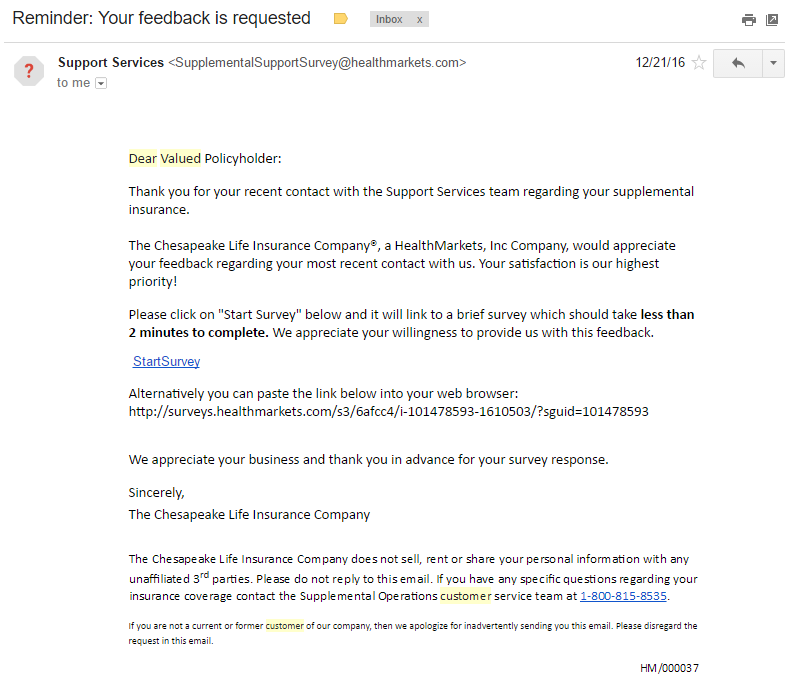
Doing this makes the correspondence look like spam right off the bat. Contrast that with Spotify’s highly personalized emails that take into account your past browsing patterns, site interactions, and preferences. Kudos to them for making the reader feel like they’re the center of attention!
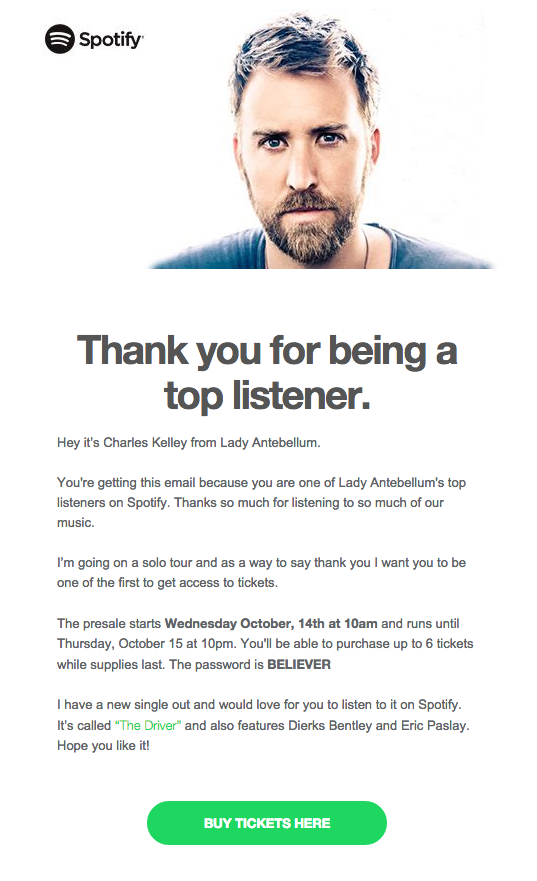
With GetResponse, it’s a breeze to personalize your emails dynamically for various customer segments.
-
Failing to integrate with other marketing channels
While email is one of the older digital marketing tactics, it is hardly a standalone channel anymore. Therefore, ensuring it works in tandem with your website, app, and social media profiles while incorporating customer data is a must. Even though this seems obvious, there are a number of obstacles that stand in the way.
Integrating multiple channels with your email marketing strategy means that each tool must work in concert to provide the most relevant content in the most appealing way. Every consumer touchpoint needs to be linked to allow the flow of information to run smoothly. Marketers have been struggling with this concept for a long time.
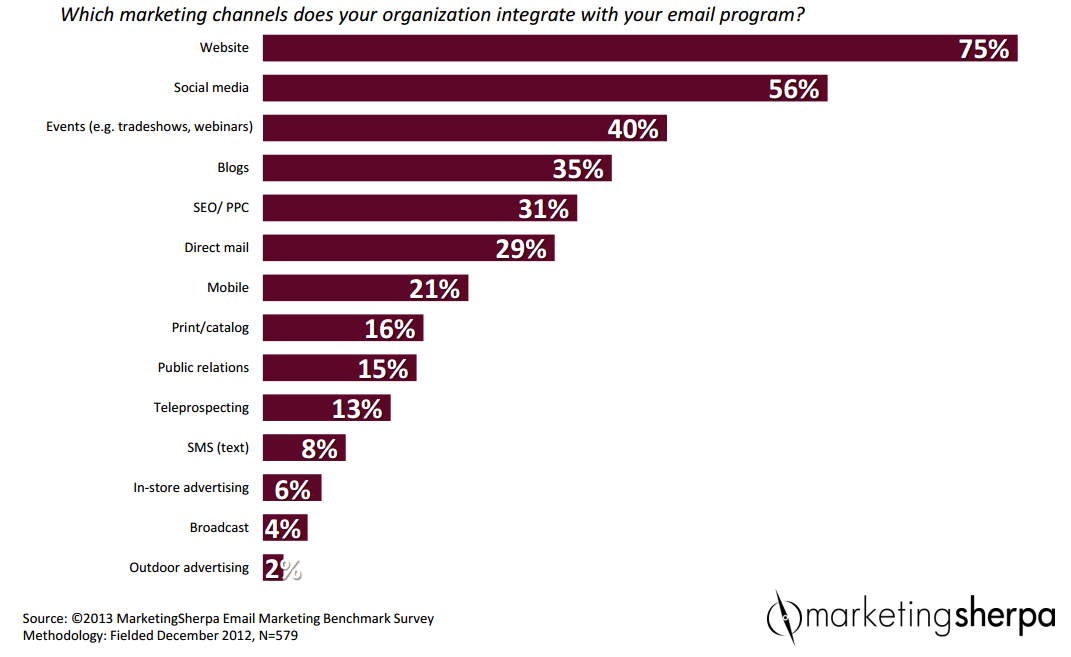
Properly merging multiple channels is crucial in creating more targeted and consistent communication. In order to ensure consistency across all of the channels where you market, you need to make sure your inter-departmental teams communication and document sharing is up to snuff.
Surmount the risk of weak multi-channel campaigns by getting your content creation, customer support, sales, SEO, PR, and email marketing departments work together using a collaboration tool like WorkZone. Individuals and teams working on different campaigns – paid or organic – can easily stay on top of what the others are doing and share updates with them.

-
Bad subject lines
The subject line is by far the most vital part of the entire email. It is the first (and only assured) thing a viewer will see when the email shows up in their inbox. It is what makes them decide whether or not they want to read it.
Subject lines determine the life and death of your email. Drawing in readers depends on how carefully you craft it. Don’t go overboard with buzzwords or “free” or “amazing.” Excessive use can come across as clickbait and will result in a trip to the trash folder. That said, there are no hard and fast rules for subject lines – even a spammy, all caps subject line might grab attention now and then:

You’ll come across innumerable studies and articles on how to write the right subject line that will deliver 541 percent more responses, but the long and short of it is that you need to creatively make it clear, concise and clever. Find a happy medium between boring and overly ambitious. Let your brand’s persona shine through!
-
Focusing solely on promotion
Email marketers should prioritize engaging customers instead of spouting corporate jargon. Consumers today are becoming less and less susceptible to blatant sales tactics such as this:
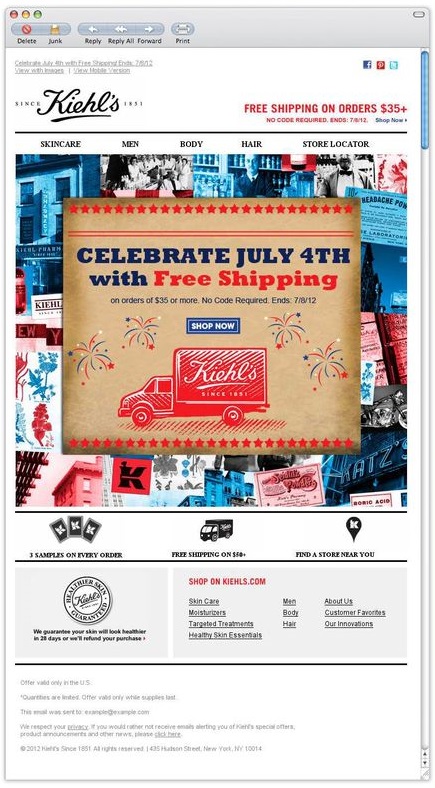
While the ultimate goal is obviously to sell your product or service, the focus should be on delivering valuable, relevant content. Try doing things like providing links to your blog posts within the email body, directing viewers to compelling brand material instead of just in-your-face promotions.
I’m not advocating not selling your product by any stretch of imagination. All I want to emphasize here is that you need to find the elusive balance of content, design, and deals in your emails.
-
Not proofreading thoroughly
There is perhaps nothing worse than sending out a business email riddled with typos and grammatical mistakes. When this happens, a good deal of your professionalism is diminished. Take a look at this “small” mishap:
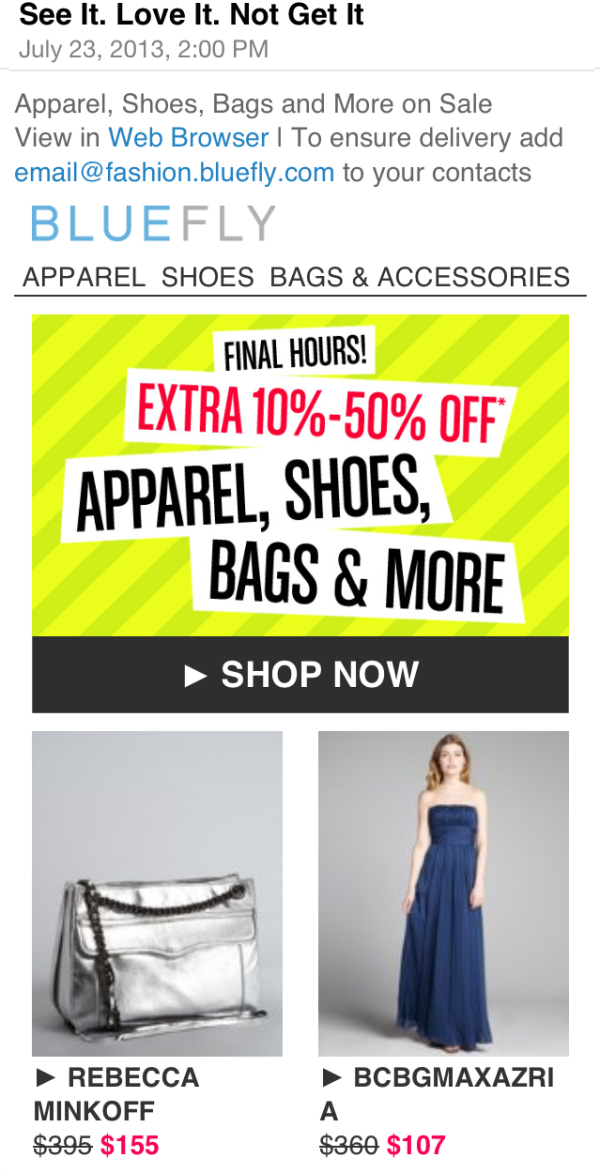
In the subject line, “Not Get It” was most likely supposed to be “Now Get It.” See how one letter can make a huge difference? This error completely changes the whole message of the email.
As you can see, the margin for error is extremely small. Before hitting send, be sure you’ve gone over the entire message multiple times. It also helps to get a second pair of eyes on the content before it gets sent out. A tool such as Grammarly will be of immense help, especially if you’re composing quick emails in your browser itself.
-
Not having a call-to-action (CTA)
The end goal of a business email is to push the viewer in the direction that leads to a conversion of some sort. Whether it be directing to product pages, blog content, or just your home page, a good CTA is essential. Failure to place one within the email will result in minimal return and your click-through rate will suffer. Take a look at this email:

While this imagery is compelling and informative about the deal being offered, where does the viewer go from here? There is no obvious CTA button or link to follow.
The CTA is what the entire email leads to. They are one of the most common factors used in A/B testing. GetResponse of course lets you test every aspect of your emails and other marketing ventures. Even the little things like color or text on a CTA button can make a huge different in gaining conversions.
-
Too many CTAs
At the other end of the spectrum, adding too many CTAs can make your email come across as cluttered and unfocused. At first glance, they tend to look like excessive spam and readers will be inclined to skip over it altogether. Take a look at this one:

While the promotion itself isn’t bad, there are just too many options available for one email.
It’s best to keep to one, concise CTA. In fact, emails with a single, hyper-focused call-to-action can increase clicks by 371 percent and can even boost sales by 1617 percent!
Think of your email like a sales funnel in itself. The design should work to bring the viewer to a clear-cut outcome without a second thought.
-
Not getting the timing right
Apart from the email itself, the timing you choose to send out your business material is an extremely important factor to keep in mind. If an email is sent at a bad time, all the effort you put into crafting the subject line, content, CTAs, and graphics was for nothing.
For example, if you are a B2B company and send out an email blast at 5:30 pm on a Friday, chances are, very few people will be on the receiving end and it will be buried come Monday. CoSchedule has put together a number of studies that have found the most optimal times to send business emails.
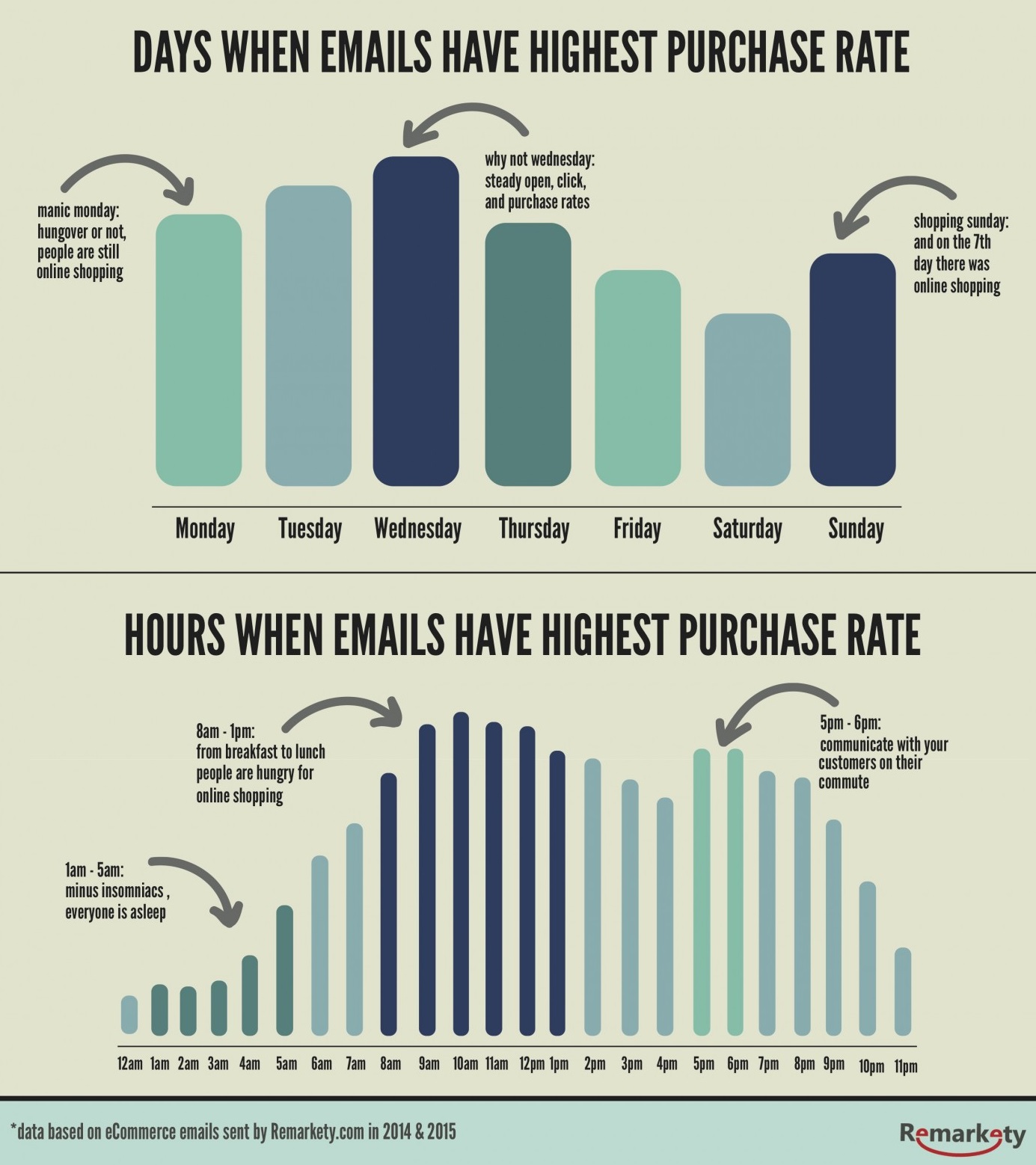
Additionally, take into account the geographical dispersal of your audience across different time zones. Your email marketing tool will have a simple function to segment your lists and avoid mishaps like these.
-
Sending too many/not enough emails
Flooding your viewers’ inbox multiple times per day is a surefire way to either get your emails deleted, or worse, have viewers unsubscribe. On the other hand, not sending enough can result in consumers forgetting about your brand. You need to find the perfect balance of persistence without being annoying. As each business is unique with a different set of followers, this can be tricky.
For example, National Debt Relief tried to send out promotional emails every day or so. As it turned out, receiving debt consolidation emails that frequently didn’t sit very well with their subscribers and they lost nearly 15 percent of their list before deciding to tone it down.
This will more than likely take some trial and error. Start small and gauge the results. Look at your open rates and find a rhythm that works.
-
Neglecting key metrics
Perhaps the biggest advantage of marketing in the digital world is the ability to track results and learn from both victories and failures. In terms of email marketing, keeping an eye on the reporting section is crucial for any campaign. You will gain all kinds of insights like what kind of messaging results in higher click through rates, how many email addresses should be taken off the list, which graphics work best, and much more.
Failure to look into your detailed reports and data is one of the biggest sins to commit in digital marketing. Without data-driven information, how do you know the degree in which your brand messaging resonates with the target audience?
More importantly, without collecting data on customer actions following the campaign, your ability to nurture leads and send follow-up messages is severely compromised.
There are six key metrics to keep an eye on throughout an email marketing campaign:
- Click-through rate – the number of subscribers who clicked on links in the email content as a percentage of total delivered emails
- Conversion rate – the number of recipients who followed the sales funnel in the email and took the desired action as a percentage of total delivered emails
- Bounce rate – the percentage of emails that were not delivered successfully
- List growth rate – the rate of net increase in the number of subscribers in your lists
- Sharing rate – the number of recipients who forwarded the email or clicked the share buttons linked to their social networks as a percentage of total delivered emails
- Overall ROI – the net profit the email campaign is generating compared to how much you’re spending on it expressed as a percentage of the total cost
Consistently monitoring your campaign and tweaking it is a complex process, but it’s the key to determining success in the future.
In conclusion
The good news is that all these mistakes do not require an enormous effort to fix. With email marketing, the best you can do is learn from your past and try again. The game is all about closely watching the data and finding the right combination of content, showmanship, timing, and creativity.
What have been your greatest email marketing follies? What did you learn from them? Tell us about it in the comments below.
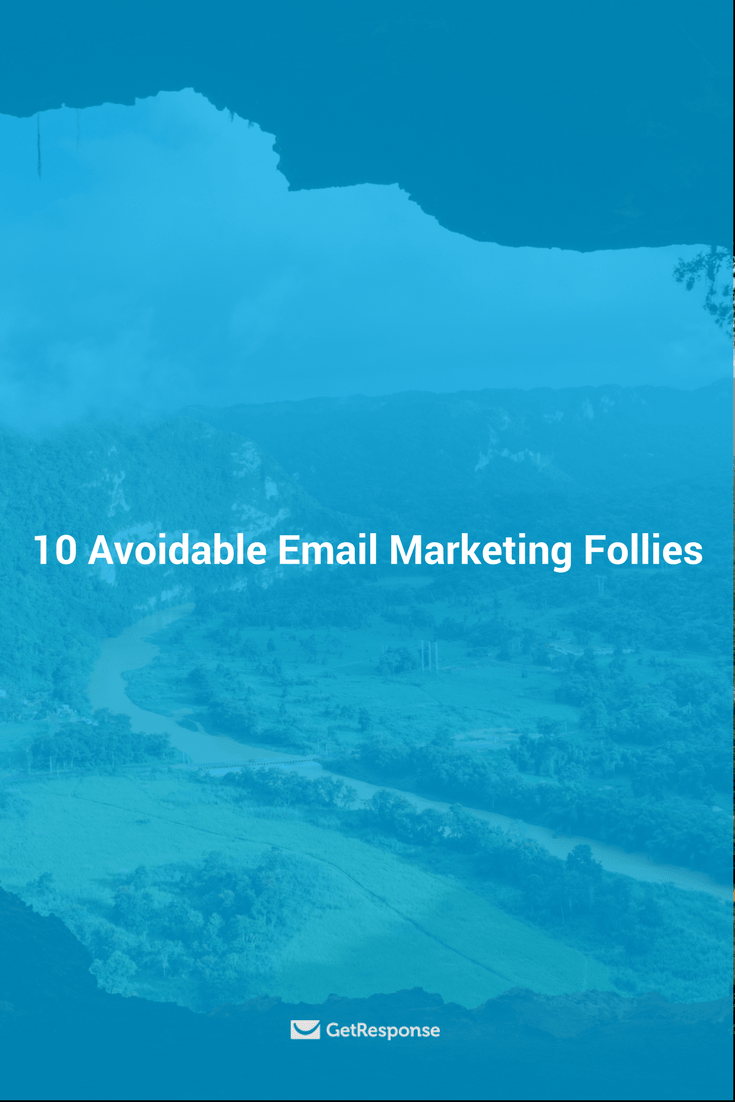
Related posts
The post 10 Avoidable Email Marketing Follies appeared first on GetResponse Blog – Online Marketing Tips.
What Business Stars Say About Jon Flatt:

“I have witnessed firsthand Jon`s unique ability to lead and build a company from the ground up. He has a proven track record to create technology, operations and company vision based on identifying early adopter trends in the market place”, VP , Circuit of the Americas

“Jon Flatt is a true entrepreneur and pioneer in the fast growing world of online advertising. His philosophies on innovation and business operations in the new economy have proven to be very successful.”, Billionaire and former owner of , The Minnesota Vikings

“Jon has an uncanny ability to quickly understand very complex issues and come up with effective scaleable solutions. His abilities as a problem solver are among the best I have ever experienced”, CEO , Verdant Frontiers

“Jon Flatt is a visionary who has the unique ability to identify early adopter trends in online advertising and more importantly, develop and execute strategies to capitalize upon those trends.”, Partner , McCombs Enterprises

“Jon Flatt builds and leads profitable, highly successful, and rapid growth companies. He is able to focus on mentoring excellent leadership teams, attracting top talent, and gaining employee loyalty during an intense high growth revenue stage. Having worked as CFO for Jon's previous company, Lin Digital, I was able to see first hand his razor sharp focus on building a highly profitable business with an end goal to produce company, employee and shareholder returns.”, CFO , Nfluient

“With almost two decades of experience in digital advertising sales, business operations, and as a publisher, Jon brings a level of combined expertise not seen often in the digital space. Leveraging owned and paid assets for revenue and sales is tough. Building a business from that success is even more difficult. Few people exist that can help you accomplish those types of goals. Jon is one of them. ”, Director, Business Development , Varick Media Management

“Jon Flatt is a true visionary in the digital space. He's a born entrepreneur, leader, and always has his finger on the pulse of "whats next".”, Regional Account Executive , LIN Digital

“If you are looking to improve your company culture, attract the best talent and position your company for maximum growth, you need to be talking to Jon. Early on in the digital World, Jon realized that tech is an important component in the Red McCombs Media value proposition and while service is key, a tech platform would position the company far beyond competitors. He conceptualized and created RedZone, a platform that streamlines internal workflow that competitors are still trying to replicate in 2016 and gives full, real-time data access to agency clients and brands beyond the limitations of a DSP or an ad server. This is just one of many things that made Red McCombs Media attractive to bidders and led to the purchase of Red McCombs Media by LIN Media. With the powerful combination of tech and service touted by LIN Media, they were purchased by Media General, who was then purchased by NexStar. All of these companies achieved great success as a result of Jon’s early work…work which has withstood the test of time.”, regional account lead , Centro



